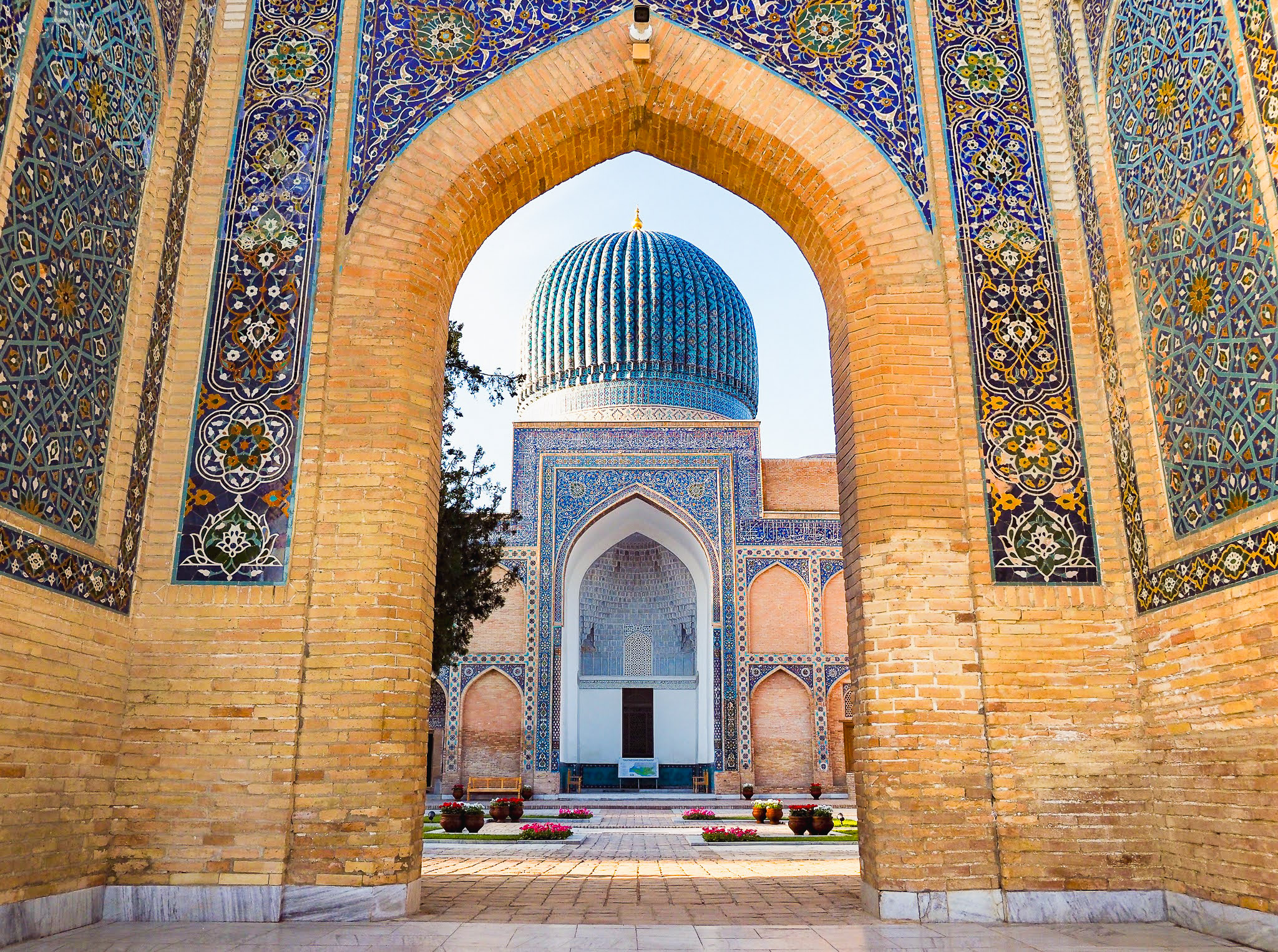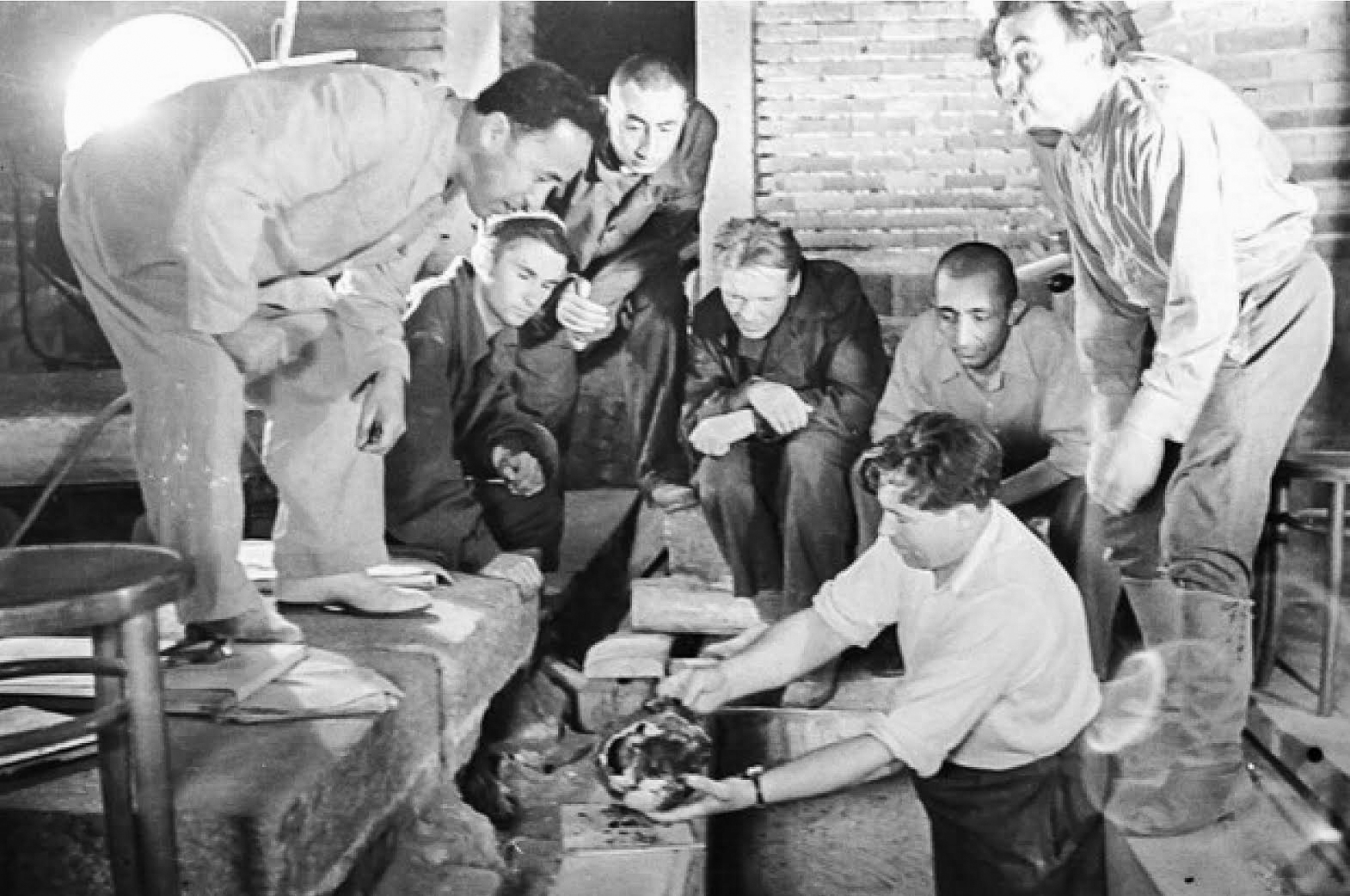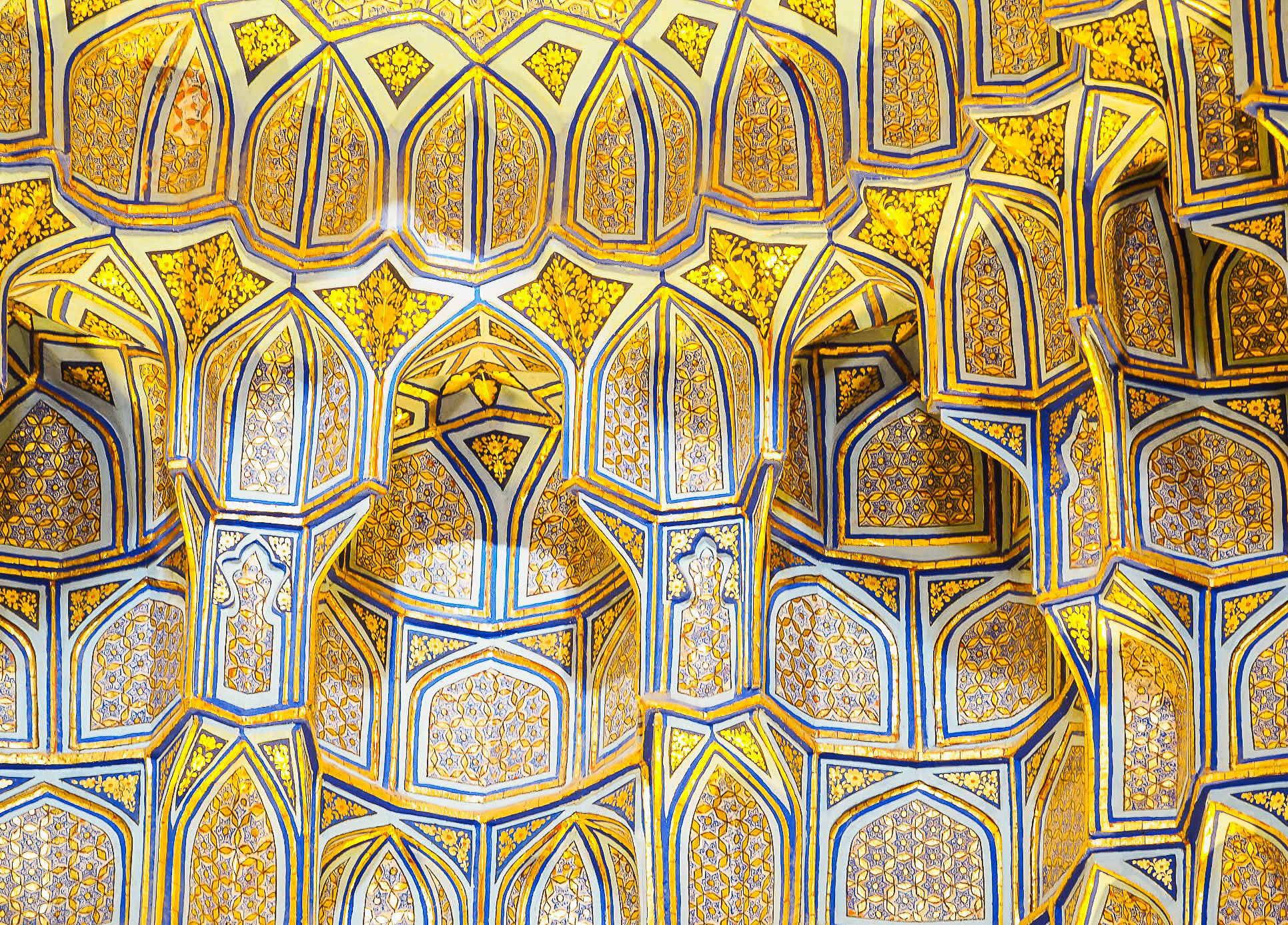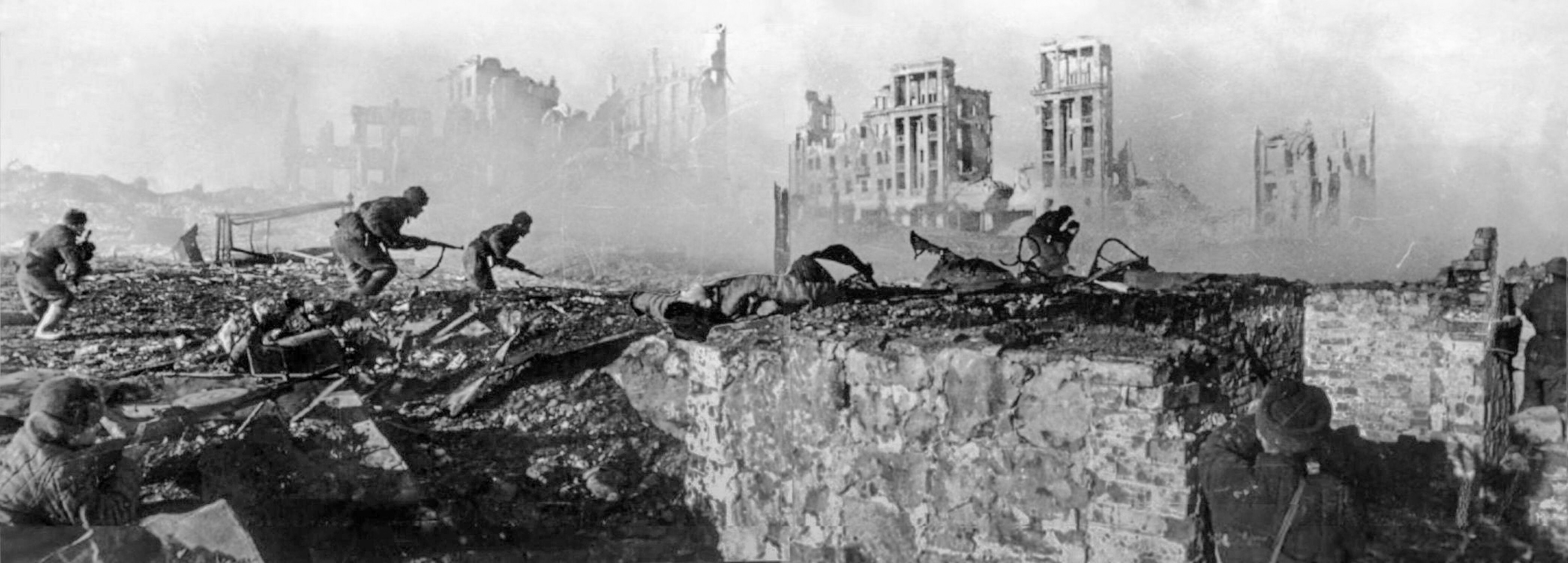Support Hidden Compass
Our articles are crafted by humans (not generative AI). Support Team Human with a contribution!
Eight decades ago, in Samarkand, Uzbekistan, a team of Soviet scientists descended into a dark, dank crypt, the first visitors in more than half a millennium to breathe the chamber’s stale air and disturb centuries of accumulated dust. An unease settled upon the group as they began their work beneath the low, claustrophobia-inducing ceilings. They’d come to this far-flung Central Asian outpost on a macabre mission — to retrieve the skull of Timur the Conqueror, still known throughout these lands as the Scourge of God.
Timur, in the mold of his predecessor Chinggis Khan, built through siege and savagery one of the largest land empires in history — a realm that stretched from Western China to the shores of the Eastern Mediterranean. It is estimated that his conquests in the late 14th and early 15th centuries resulted in the deaths of over 17 million people — 5% of the world’s population at the time.
“Surrender is forbidden.”
The Soviet team arrived in Samarkand to protestations from local imams, to whom the desecration of a grave was an Islamic taboo. The city’s religious leaders warned the Soviets of curses and beseeched the scientists to let sleeping tyrants lie — especially one as fearsome as Timur.
But the Soviets considered themselves men of reason, men of science. They were state-sanctioned atheists with little time for ancient superstitions, legends of curses, or religious taboos. Plus, the mission had been sanctioned by Soviet dictator Joseph Stalin, a fearsome tyrant and conqueror in his own right.
The expedition was led by Mikhail Gerasimov, a forensic anthropologist renowned for sculpting life-like busts from the skulls of historical figures like Ivan the Terrible and Yaroslav the Wise.
And now here was Gerasimov, his greatest quarry at hand, crammed into Timur’s crypt, working beneath the surreal glare of floodlights, and surrounded by a menagerie of academics — archeologists, anthropologists, architects, historians, cinematographers, photographers, an imam, and even a poet — each breathless with morbid anticipation as they prepared for the opening of Timur’s casket. Among the team of luminaries was a certain Aleksander A. Semenov, a polyglot who, in the years to come, would find himself at the center of this story.
For the crew working in the crypt, the cramped conditions, swirling dust, and drab stone walls stifled any hint of the dazzling beauty that stood directly above. That’s because Gerasimov’s team was in the underground necropolis of the majestic Gur-e-Amir, a blue-ribbed-dome masterpiece of Timurid architecture, its interior a bedazzlement of gold leaf, lapis lazuli, jade, marble, and onyx. This mausoleum not only stood as Timur’s final resting place but also served as a model for India’s Taj Mahal, which was built by one of Timur’s descendants.

The Gur-e-Amir, a breathtakingly-adorned mausoleum in Samarkand, Uzbekistan, is the resting place for Timur the Conqueror, who built his extensive empire in the 14th and early 15th centuries. Timur is still a revered figure in Uzbekistan — but reverence is not his only legacy. Photo: Craig K. Collins.
After laboring for hours in the swelter of the vault, a pair of archeologists finally unsealed Timur’s tomb, hoisting carefully by hand “a terribly heavy white marble slab,” as one archeologist described it, beneath which the emperor’s juniper coffin lay.
Nails were removed from the coffin’s lid, and Gerasimov wedged a pry bar gently into the casket’s upper seam. The coffin opened with a pop, and the men eagerly pulled aside its heavy plank cover.
A sharp, sickly aroma bloomed from the wooden box, filling the crowded, confined space with the musty scent of resin, camphor, rose, and frankincense, all used to embalm the Central Asian emperor.
Gerasimov paused to gaze at the mighty conqueror — now little more than dust and bones.
But after a few moments of solemnity, the anthropologist reached in, removed the once-fearsome Timur’s skull, and lofted it high for onlookers and photographers to admire. The date was June 20, 1941.

In June of 1941, a cluster of academics huddles in the crypt of Timur the Conqueror, and watches forensic anthropologist Mihail Gerasimov remove a skull from the ancient conqueror’s grave. Photo: E.A. Poliakov / Russian State Photo and Film Archive.
The mood in the crypt that night among the Soviet team was one of joyous triumph. Little heed had been paid to the dozens of lines of florid Arabic inscriptions on Timur’s tomb and coffin. There would be time later for the tedious task of transcription and translation. Thus, as the story is now told, the Soviets overlooked one prominent line that offered a dire warning.
“Whosoever disturbs my grave,” the inscription read, “shall unleash a conqueror greater than I.”
~~
At that moment, in faraway Europe, the most feared army, perhaps since Timur’s own, had amassed on the Soviet Union’s western border. The sun would rise only once more before that military force was unleashed with cataclysmic fury just before dawn on June 22, 1941, when Adolph Hitler broke his non-aggression pact with Stalin and launched Operation Barbarossa.
The invasion stunned the Soviets as more than 4 million Nazi and Axis soldiers stormed into the Soviet Union. It remains the largest invasion in world history — one that would engage more than 10 million combatants and leave, by some estimates, as many as 25 million Soviet citizens dead.
We are all part of a species that can harness terrible power and inflict hideous harm on a massive scale.
Even as the land and skies of Ukraine and Belarus swarmed with Nazi soldiers, tanks, and planes, Stalin dithered, gripped by an inexplicable disbelief. It would be several days before he started to grasp the enormity of the disaster that had befallen his country — and weeks more before his military command would even begin to put the Soviet Union on a war footing capable of fighting back.
Hitler’s code name for the assault — Barbarossa — was Italian for “red beard,” and was a reference to Frederick Barbarossa, the 12th-century German King, a great conqueror and military tactician who would eventually ascend to Holy Roman Emperor.
Back in Uzbekistan, Timur’s skull still held much of his beard, the color of which, as anthropologists would later confirm, was red.
~~
It is dawn in Samarkand, 82 years hence, and I am sitting alone in the Gur-e-Amir in quiet meditation with one of the most murderous men in history.
I arrived here having walked past a pair of gilded Caspian tigers — now extinct, but which once roamed these lands — guarding the entrance to the mausoleum complex. Nearby, on a throne atop a red granite pedestal in the center of Samarkand’s main thoroughfare sits a massive, 20-foot-high bronze of the fearsome conqueror. In life, he was described by Arabic writer Ahmad ibn Arabshah as “lofty of stature” with a long beard, big in brow and head, stout, powerful in voice, fearless of death, and lame on the right side. Known as Tamerlane in Europe, or Timur the Lame by his Persian enemies, he walked with a limp, reportedly from having been shot with arrows while rustling sheep as a younger man. In statue form, he looks beatific as he gazes out over what was once the capital of his vast empire.
Outside, a pale summer sun rises over Transoxiana, a crescent of fertile green between two great rivers, the Amu Darya to the southwest and the Syr Darya to the northeast. Agriculture and civilization have been constant here for some 10,000 years.
Inside, sunlight pours through the intricately carved marble lattice within the pointed arches of the mausoleum. Soon, the chamber is awash in a golden glow as light dances off the fantastical geometric designs of gold and lapis lazuli on the mausoleum’s walls, muqarnas, and dome. The scene, without hyperbole, is breathtaking.

Sunlight glimmers on the gold-leafed muqarna (honey-combed vaulting) of the Gur-e-Amir just after dawn, as author Craig K. Collins wanders the mausoleum alone, considering the legacy of Timur the Conqueror. Photo: Craig K. Collins.
I am here alone, several hours before the site opens to the public, because I strolled into the courtyard of the Gur-e-Amir before dawn, hoping to take some exterior sunrise photos, and found the doors to the mausoleum open.
I stare at Timur’s cenotaph, a block of black nephrite jade — perhaps the largest such stone in the world — that his grandson Ulugh Beg, whose adjacent cenotaph is of white marble, brought back from a military campaign east of the Syr Darya in 1425. The striking stone is believed to be ancient, likely originating from a temple in China and later used as part of a throne for the Great Khan Duwa, a descendant of Chinggis Khan, before being carted back, with great difficulty, by Beg.
Sitting in the mausoleum, I close my eyes, take a series of deep breaths, listen to the silence, and commune with Timur.

A 20-foot-high bronze statue of Timur the Conqueror — also known as Tamerlane, Timur the Lame, and The Scourge of God — sits atop red granite in Samarkand, Uzbekistan. Photo: Stephane Lemair / Hemis.
~~
It was Timur who transformed Samarkand into a place viewed the world over as mysterious and magical. Europeans came to call it The Pearl of the East, and its very name rolls off the tongue like poetry: Samarkand.
In the late 1300s, Timur made Samarkand the capital of his vast empire, heaping upon the city untold wealth. His vision and ambition for his capital resulted in the blossoming of Samarkand, triggering the Timurid Renaissance and contributing in many important ways to the coming European Renaissance.
The conqueror’s genius and interests were widespread. He spoke several languages and surrounded himself with some of the Islamic world’s greatest philosophers, poets, architects, artists, mathematicians, and astronomers. Timur’s innovative urban planning also converted the city into a welcoming magnet for Silk Road merchants and their camel caravans. He built majestic centers of learning and scientific research, mausoleums, and mosques — architectural marvels that enchant visitors to this day.
The chamber is awash in a golden glow as light dances off the fantastical geometric designs of gold and lapis lazuli.
But he hadn’t built Samarkand from nothing. The city — positioned roughly halfway between Constantinople (modern Istanbul, Turkey) and Xi’an, China — had already been a central hub of the Silk Road for almost two millennia. Porcelain, silk, jade and spices traveled west from Xi’an, bound for the wealthy cities of the Roman Empire and, in later centuries, for Medieval and Renaissance Europe. From the south, more spices arrived from India, as well as precious gems such as diamonds, rubies, and emeralds. In 751 CE, Samarkandians wrested the secret of papermaking from the Chinese and established some of Central Asia’s earliest paper mills, supplying for the first time both the Islamic world and Europe with this ingenious commodity. Situated at the nexus of several ancient trade routes, Samarkand became one of the wealthiest cities on the planet.
And, of course, the constellation of talent that Timur had “gathered” from the far corners of his empire in the name of discovery was brought to the city by force. Because to build Samarkand’s wealth, Timur savagely looted other cities, conquered kingdoms, and toppled rival rulers.
Thus it is from the battlefield that Timur’s name and infamy ring down through the ages. Undefeated in battle, Timur is regarded as one of history’s greatest commanders and military tacticians.
By the late 14th century, he’d felled five of the planet’s six great empires before turning his attention to the sixth: China’s Ming dynasty. Persia (modern-day Iran and Iraq), the Golden Horde (southwestern Russia), the Mamluks (Egypt and Syria), the early Ottomans (Turkey), and the Delhi Sultanate (India) had all succumbed to the onslaught and had fallen under the yoke of the Timurid Empire.
In his wake, Timur had razed the cities of Baghdad, Isfahan, Delhi, and Damascus, all of which were rich centers of culture, science, and learning. In Isfahan, located in modern-day Iran, his army was ordered to slaughter the entire city and murdered between 100,000 and 200,000 people. An eyewitness to the carnage wrote of how Timur’s men erected 28 pyramids throughout the city, each constructed of 1,500 human heads.
The savagery and slaughter that were hallmarks of Timur’s military were something he’d adopted from Chinggis Khan, who swept through Transoxiana with his Mongol Horde, leveling Samarkand in 1220, killing perhaps as many as 200,000 inhabitants, and enslaving another 60,000 men for his army. Reverence for Chinggis and his tactics still ran high in Central Asia during Timur’s day — so much so that Timur married a direct descendant of Chinggis in order to claim lineage to and derive authority from the Mongol emperor.
But the military tactics were not merely barbarity for barbarity’s sake. Rather, they were part of an ingenious, albeit shockingly heinous strategy. Although the death tolls may have been somewhat exaggerated, the terror was real. By spreading fear far in advance of their approach, by the time the conqueror’s forces arrived at the gates of a walled city, that city’s leaders would frequently capitulate and surrender without an arrow slung in order to avoid, at all costs, the Wrath of Khan.
In Aleppo, after a Mamluk viceroy killed a Timurid emissary sent to demand a peaceful surrender, Timur sacked the city and ordered his men to construct another pyramid of carnage, this one numbering more than 20,000 heads, according to the accounts of witnesses.
He then laid siege to Damascus. When the city’s imams came to Timur and pleaded for the safety of its citizens, Timur, himself a Muslim, promised sanctuary in the Great Mosque, one of the largest, oldest, and most revered in the Islamic world. After scores of panic-stricken residents crowded into the building, Timur’s troops locked the doors and burned the men, women, and children alive. Some have said the number of victims totaled 30,000.

Timur took inspiration from the conqueror Chinggis Khan, who wielded tactics of fear, siege, and savagery. Here, a moment of violence is captured in a painting depicting a Timurid battle during the height of the Silk Road era. Photo: James Talalay / Alamy.
In December of 1404, he set out to begin his conquest of the Ming dynasty. But in 1405, at the outset of the campaign, Timur fell ill after crossing the Syr Darya and died, thus saving the Ming dynasty from almost certain destruction.
~~
The expressed mission of the Gerasimov expedition was to find out all they could about Timur, his descendants, and the history of the Gur-e-Amir, but they also wanted to assert the supremacy of Marxist ‘science’ over religion, which they saw as superstition. One of the ways to achieve this was to demote Timur and elevate the standing of his grandson Ulugh Beg, whom the Soviets thought would be a better symbol of Uzbek pride.
Beg’s life trajectory was in complete contradiction to Timur’s. Appointed ruler of Samarkand at age 16 and later as Sultan of his grandfather’s empire, Beg only led a single major military campaign during his rule. Instead, he opted to focus on making Samarkand a world-class center of culture, math, and science.
In the 1400s, Beg assembled a cohort of the leading mathematicians and astronomers from throughout the Islamic world. He then built an observatory — a giant sextant, really — at Samarkand and began charting the positions of the planets and more than 1,000 stars with uncanny accuracy. Beg and his team pushed far past the existing boundaries of trigonometry and were able to calculate the exact time of a year within 58 seconds, as well as the fact that the earth rotated on an axis that tilted precisely 23.5047 degrees. His star chart, the Zij-i-Sultani, stands as one of the most important publications in the field of science, let alone astronomy, and was used by Nicolaus Copernicus a century later to develop his heliocentric model of the solar system.
But Beg’s focus on peaceful endeavors couldn’t save him from a violent end.
In 1449, he was overthrown by his eldest son Abdal-Latif, who offered his deposed father an opportunity for redemption via a pilgrimage, or hajj, to Mecca. Beg appreciated his son’s leniency and left Samarkand with a royal procession for the 5,000-mile round-trip journey. Unfortunately for Beg, his hajj lasted only a few miles. Historical accounts claim that Beg was met by assassins sent by his son and was beheaded on the outskirts of Samarkand on Oct. 27, 1449.
Following his death, Beg’s observatory was destroyed and his astronomers and mathematicians driven out of Samarkand. Thus, just as the Islamic world was on the cusp of making one of astronomy’s most significant discoveries — the heliocentric model of the solar system — Abdal-Latif managed to slam that door shut, stunting the advancement of human knowledge and leaving a jewel of scientific discovery for the Europeans to pluck a century later.
It was against this historical backdrop that Gerasimov’s team arrived in Samarkand in 1941 and, with cameras rolling, descended into the subterranean chamber beneath the mausoleum of the Gur-e-Amir.
A sharp, sickly aroma bloomed from the wooden box, filling the crowded, confined space with the musty scent of resin, camphor, rose, and frankincense, all used to embalm the Central Asian emperor.
Ultimately, the Soviets simply confirmed for modern science what was already known from historical records.
Timur was indeed lame. He had a fused bone in his right leg that would’ve caused him to walk with a limp, as well as a withered right arm, injuries consistent with the purported arrow wounds he received when he was younger.
And Ulugh Beg, the philosopher king, did indeed lose his head to a sharp instrument, likely the stroke of an assassin’s sword.
However, the Soviets’ carefully planned propaganda campaign, centered around the opening of the Timurid tombs, came crashing down under the sudden weight of the Nazi onslaught. A 1941 documentary film about the expedition titled Gorod Samarkanda was produced but never shown publicly. And much of the scientific research and academic papers were shelved in libraries and academies in Moscow and Tashkent for decades, never seeing the light of day.
~~
The bookend to the saga of the Timurid skeletons took place when Stalin, who by now had perhaps gotten the heebie-jeebies over being in possession of Timur’s remains, ordered the skulls and skeletons returned to the Gur-e-Amir. On Dec. 20, 1942, Timur and his descendants were once again entombed with full Islamic rituals in their graves beneath the Gur-e-Amir.
Meanwhile, at the exact time Timur was again being laid to rest, the deadliest single battle in the history of warfare was drawing to a grim close. Hitler’s vaunted army had found itself in a mortal checkmate from Stalin’s forces at Stalingrad (now Volgograd), located 1,600 miles northwest of Samarkand and, coincidentally, in the exact region where half a millennia earlier, Timur had defeated the Golden Horde and sacked their capital city of Sarai.
At Stalingrad, a Soviet counteroffensive had completely surrounded the battered and depleted German Sixth Army. On the same day the Soviets were returning Timur to his grave, at least one high-level Nazi official was pleading with Hitler to permit the Sixth Army to retreat from Stalingrad in order to save the lives of hundreds of thousands of men. Hitler became enraged by the request.
“Whosoever disturbs my grave, shall unleash a conqueror greater than I.”
Later, when Field Marshal Friedrich Paulus, commander of the Sixth Army, cabled Hitler, asking for permission to surrender, Hitler cabled Paulus back:
“Surrender is forbidden. Sixth Army will hold their position to the last man and the last round and by their heroic endurance will make an unforgettable contribution toward the … salvation of the Western World.”
Paulus held his position. Six weeks of hand-to-hand combat ensued in the bitter cold of the Russian steppes.
“It was terrifying on both sides,” wrote French historian Francois Kersaudy in his book Stalingrad. “The people there would have preferred hell itself.”
When it was over, the casualties were staggering, numbering nearly two million.
It was carnage on a scale that perhaps Timur himself would recognize.

This image, taken in the final 48 hours of the Battle of Stalingrad, shows Red Army soldiers launching an attack on German positions. The epic battle would ultimately end the lives of almost two million people. Photo: Geopix / Alamy.
~~
The fact that Timur, in death, really did cross paths with Hitler and Stalin is weird, spooky, and mostly true.
The trouble, though, is that the inscription of the curse never existed.
Among the team of luminaries was a certain Aleksander A. Semenov, a polyglot who, in the years to come, would find himself at the center of this story.
In 1989, the Berlin Wall fell, the Soviet Union collapsed, and in 1991, the independent country of Uzbekistan rose from the rubble of the once-mighty Soviet empire.
In 2003, a provocative Russian documentary titled Prokliatie Tamerlana (Tamerlane’s Curse) discussed an ancient book warning that whoever disturbs Timur’s grave would unleash a ferocious world conqueror. The documentary suggested that the 1941 Soviet expedition to the Gur-e-Amir was to blame for Hitler’s WWII invasion of the Soviet Union, even though the film failed to provide either the name of the ancient book or prove its existence.
As Uzbekistan began to throw open its doors to foreign tourists eager to see the wonders of Silk Road cities like Samarkand, the fable of Tamerlane’s Curse began to grow. Today, what started as a tale of an ancient book has morphed into one about an apocalyptic warning clearly inscribed on Timur’s tomb — a warning that was blithely ignored by Soviet scientists, thus triggering the Nazi invasion of the Soviet Union. It’s a story repeated dozens of times a day by Uzbek tour guides and mentioned in countless travelogues, social media posts, blogs, and even Wikipedia pages and film documentaries about Samarkand. But it simply isn’t true.
We know this thanks to the work and diligence of Semenov, the Soviet linguist and Central Asian administrator who served as a key member of the Gerasimov expedition. In the late 1940s, Semenov published three volumes of translations of the Timurid inscriptions from Arabic to Russian, which proclaimed nothing more than historical dates, royal genealogy, verses from the Koran, and prayers of humility offered to Allah and Mohammad.
An example includes: “My God, I believed in you and asked for help to eliminate and cancel all evil and misfortune in this world.”
All hypocrisy aside, coming from a guy whose actions led to the deaths of 17 million people, there is nothing warning of apocalyptic vengeance in the case of grave desecration.
This is simply a ghost story cooked up by Uzbeks to spook tourists, generate media and internet buzz, and punish the Russians for the desecration of Muslim graves.
~~
Outside the Gur-e-Amir, the summer sun continues to rise, and a shaft of light streams onto Timur’s cenotaph. I can clearly see swirls from Arabic inscriptions on the edges of the black jade stone — the very swirls that Semenov so diligently translated.
I sit quietly, transfixed by the sunlight now reflecting off the polished jade that marks Timur’s grave. Enveloped in silence and ensconced in splendor, I wrestle with the contradiction of Timur.
The sheer beauty of Timur’s mausoleum is difficult to square with the death and carnage the conqueror spread to the four corners of Asia. And the near-deification of Timur here in Uzbekistan — his visage is everywhere: monuments, statues, museums, currency — is eye-opening. Though the Soviets were desperate to counter this exact outcome with their 1941 expedition here, it’s clear that Stalin’s plan to mute Timur, decades later, has failed spectacularly.
And so it is that every visitor here will be forced to wrestle with the meaning of Timur the Conqueror. To understand that we are all part of a species that can harness terrible power and inflict hideous harm on a massive scale. To rejoice that our salvation may also lie in our ability to create transcendent works of beauty like the Gur-e-Amir, and to expand the understanding of our place in the universe with documents like the Zij-i-Sultani.
I leave the cool of the mausoleum and walk into the glare of the sun reflecting off the white stones in the courtyard. It is still early, but the heat of the day is already upon me.
I walk to the back of the Gur-e-Amir to the narrow stone steps leading down to Timur’s actual grave. The thick wooden door is locked, but I put my hand overhead on an inscription. The stone, warm in the sun, is smooth. I run my fingers along the Arabic script, which translates: “This is the resting place of the illustrious and merciful monarch, the most great Sultan, the mighty warrior, Lord Timur, Conqueror of the World.”
Craig K. Collins
Craig K. Collins is a San Diego-based writer and the author of Thunder in the Mountains (Lyons Press, 2014) and Midair (2016); he has a novel due out later this year.



